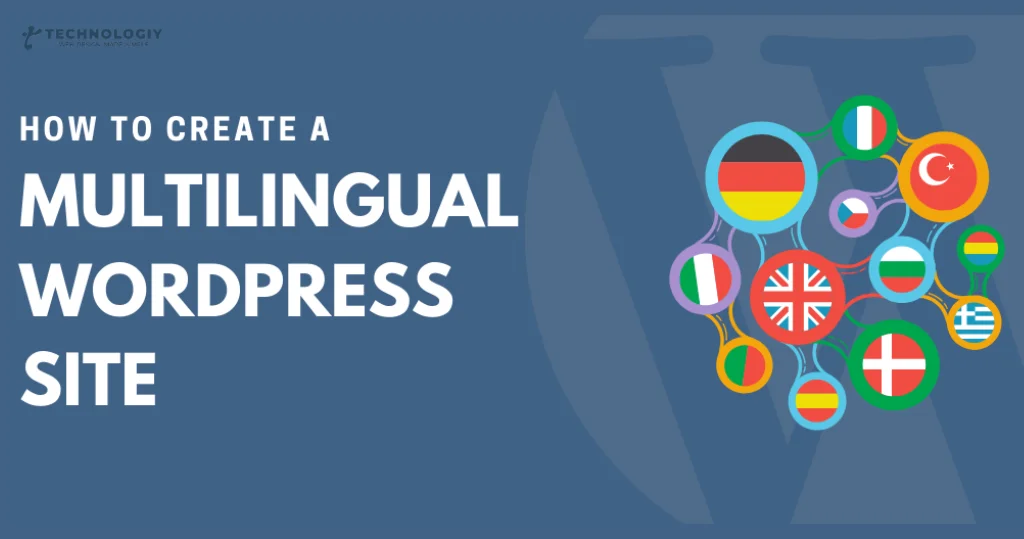Welcome to our blog post where we delve into the importance of multilingual websites and why they matter in today’s digital landscape. In a world that is becoming increasingly interconnected, catering to a diverse audience is crucial for any business or organization. One effective way to achieve this is through the use of multilingual WordPress websites. In this article, we will explore the benefits of embracing multilingualism and how it can help you reach a wider audience, boost engagement, and drive business growth. So, let’s dive in!
Reach a Global Audience:
Having a multilingual website gives you the ability to connect with a global audience. By speaking your visitors’ language, you break down communication barriers and create a more inclusive online environment. Whether you are an e-commerce store, a blog, or a service provider, offering content in multiple languages allows you to tap into new markets and expand your reach beyond borders.
Enhance User Experience:
When users visit a website in their native language, they feel a stronger sense of connection and trust. Multilingual websites provide an enhanced user experience by offering content that resonates with individuals on a cultural and linguistic level. By speaking your audience’s language, you demonstrate that you understand and value their needs, leading to increased engagement, longer browsing sessions, and higher conversion rates.
Improve SEO and Boost Organic Traffic:
Multilingual websites have a positive impact on search engine optimization (SEO). By creating content in multiple languages, you increase your chances of ranking higher in search engine results pages (SERPs) for relevant keywords in each language. This implies that prospective customers searching for products or services in their mother tongue are likelier to come across your website. By tapping into new markets, you can attract organic traffic from different regions, resulting in higher visibility and increased brand exposure.
Gain Competitive Advantage:
In the contemporary competitive business environment, setting yourself apart from the competition is crucial. By offering your website in multiple languages, you differentiate yourself from competitors who may only cater to a single language audience. This positions your business as more accessible and customer-centric, giving you a competitive edge. By embracing multilingualism, you demonstrate a commitment to inclusivity and cultural diversity, which enhances your brand’s reputation and fosters customer loyalty.
Expand Your Business Globally:
Expanding your business internationally is a goal for many companies. A multilingual website serves as a powerful tool to facilitate this expansion. By providing localized content, you can adapt your messaging, promotions, and offerings to suit different markets. This personalized approach helps you establish meaningful connections with customers worldwide, build trust, and ultimately drive business growth.
Multilingual WordPress Websites:
Choosing the Right Multilingual Plugin Are you looking to expand the reach of your website and connect with a global audience? If so, creating a multilingual WordPress website is a must. With the right multilingual plugin, you can easily translate your content into multiple languages, making it accessible and engaging for a wider audience. In this blog post, we will guide you through the process of choosing the right multilingual plugin for your WordPress website.
Why Go Multilingual?
In an increasingly connected world, having a multilingual website can give you a competitive edge. By offering content in multiple languages, you can attract a broader audience, increase your website traffic, and ultimately, boost your business. Whether you’re a blogger, an e-commerce owner, or a global organization, going multilingual can open up new opportunities and help you connect with people from different cultures and backgrounds.
Choosing the Right Multilingual Plugin:
Ease of Use:
One of the first things you should look for in a multilingual plugin is its user-friendliness. You want a plugin that is easy to install, configure, and use. Look for a plugin with a simple and intuitive interface that doesn’t require coding knowledge. This will save you time and make the translation process hassle-free.

Language Support:
The primary purpose of a multilingual plugin is to translate your content into different languages. Therefore, it is crucial to choose a plugin that supports the languages you want to target. Make sure the plugin you choose offers a wide range of language options and has reliable translation services.
Compatibility:
Compatibility with your existing WordPress theme and plugins is essential. Ensure that the multilingual plugin you choose works seamlessly with your current setup without causing any conflicts or compatibility issues. This will ensure a smooth user experience for your visitors.
SEO Optimization:
An often overlooked aspect of multilingual websites is SEO optimization. Look for a plugin that allows you to optimize your translated content for search engines. This includes features like URL structure, meta tags, and XML sitemaps for each language. An SEO-friendly plugin is essential to ensure that your multilingual website ranks high in search engine results.
Support and Updates:
Choose a multilingual plugin that is regularly updated and supported by its developers. This will ensure that any bugs or security vulnerabilities are promptly addressed and that you have access to the latest features and improvements. A responsive support team is also crucial in case you encounter any issues or need assistance.
A Must-Have for Multilingual WordPress WebsitesIntroduction:
Welcome to our blog, where we will dive into the world of setting up language switching and navigation on your WordPress website. As the internet becomes increasingly global, catering to a multilingual audience has become a necessity for many businesses and individuals. In this comprehensive guide, we will explore the importance of a multilingual website and provide you with step-by-step instructions on how to implement language switching and navigation. Let’s get started!
Why Multilingual Websites Matter:
In today’s interconnected world, reaching a wider audience is crucial for the success of any website. By offering content in multiple languages, you can engage with a diverse range of users and expand your global reach. Whether you’re an e-commerce store, a professional blogger, or a small business owner, having a multilingual website can give you a competitive edge. Not only does it enhance user experience, but it also builds trust and credibility with your target audience.
Step 1: Choose the Right Translation Plugin:
To set up language switching and navigation, you’ll need a reliable translation plugin. WordPress offers various plugins that can seamlessly integrate with your website and simplify the translation process. Several well-known choices include WPML, Polylang, and Weglot. Research the features and compatibility of each plugin to find the one that best suits your needs.
Step 2: Install and activate the translation plugin:
Once you’ve selected the translation plugin that suits you, it’s time to install and activate it on your WordPress website. Head over to the plugin repository, search for your chosen plugin, and click on the “Install Now” button. After installation, activate the plugin to begin the setup process.
Step 3: Configure the Translation Plugin:
Now that your translation plugin is active, it’s time to configure it to enable language switching and navigation. This typically involves selecting the languages you want to offer, customizing language switchers, and setting up language-specific permalinks. Follow the plugin’s documentation or user interface to complete this step.
Step 4: Translate your Content:
With the plugin configured, it’s time to start translating your content. Depending on the plugin you choose, you may have various options for translating your pages, posts, menus, and other elements. Certain plugins provide automated machine translations, while others permit manual translations or integration with professional translation services. Choose the approach that works best for your needs and begin translating your content accordingly.
Step 5: Implement Language Switching and Navigation:
Once your content is translated, it’s time to implement language switching and navigation on your website. Most translation plugins provide widgets or shortcodes that you can use to add language switchers to your navigation menu, sidebar, or footer. Customize the design and placement of the language switcher to ensure it seamlessly integrates with your website’s aesthetics.
Step 6: Test and Optimize:
After implementing language switching and navigation, thoroughly test your website to ensure everything is working as expected. Check for any broken links, missing translations, or other issues that may affect user experience. Continuously monitor your website’s performance and user feedback to identify areas for improvement and optimize your multilingual experience.
Managing Multilingual Media and Images: A Guide for Multilingual WordPress Websites Are you running a multilingual WordPress website and struggling with managing media and images in different languages? Look no further, because in this comprehensive guide, we will walk you through the process of effectively managing multilingual media and images on your website. Whether you’re a business owner or a website administrator, this blog post is packed with valuable tips and tricks to help you optimize your multilingual WordPress website.
Why is Managing Multilingual Media and Images Important?
When you have a multilingual website, it’s crucial to ensure that your media and images are properly translated and displayed in the right language for your visitors. By doing so, you improve the user experience and increase engagement, resulting in higher conversion rates and overall success for your website. Effective management of multilingual media and images not only helps you reach a wider audience but also enhances your brand’s credibility in the global market.
Optimizing Multilingual Media and Images with WordPress
Choose a Multilingual Plugin:
To manage your multilingual media and images, start by selecting a reliable multilingual plugin for your WordPress website. Popular options such as WPML, Polylang, and qTranslate X offer seamless integration and provide robust features specifically designed to handle multilingual content.
Translate Media and Images:
Once you have your multilingual plugin set up, it’s time to translate your media and images. If you have a large volume of visual content, consider outsourcing the translation work to a professional translator or agency. Alternatively, you can use AI-powered translation tools like Google Translate or DeepL to generate a rough translation, which can then be refined by a human translator.
Organize Your Media Library:
To efficiently manage your multilingual media, create separate folders or categories within your WordPress media library for each language. This allows you to easily locate and update specific media and images in the desired language, saving you time and effort in the long run.
Utilize Image Optimization Techniques:
Optimizing your images is essential for improving website performance and user experience. Use plugins like Smush or EWWW Image Optimizer to compress and resize your images without compromising their quality. Additionally, make sure to add alt text and image titles in each language to enhance accessibility and SEO.
Enable Language Switcher:
Implement a language switcher on your website to allow visitors to easily toggle between different language versions. This helps them find the content they need and ensures a smooth navigation experience. Popular plugins like Polylang and WPML offer built-in language switcher widgets for easy integration.
Regularly Update and Maintain:
Managing multilingual media and images is an ongoing process. Regularly check for broken links, missing translations, or outdated images, and promptly make the necessary updates. This ensures that your website remains up-to-date and provides a seamless experience for your multilingual audience.
Managing multilingual media and images on your WordPress website can seem like a daunting task, but with the right tools and techniques, it can be a breeze. By following the steps outlined in this guide, you’ll be well-equipped to optimize your multilingual website and connect with a global audience. Remember, effective management of multilingual media and images not only enhances user experience but also contributes to the overall success of your online presence. Happy translating!
